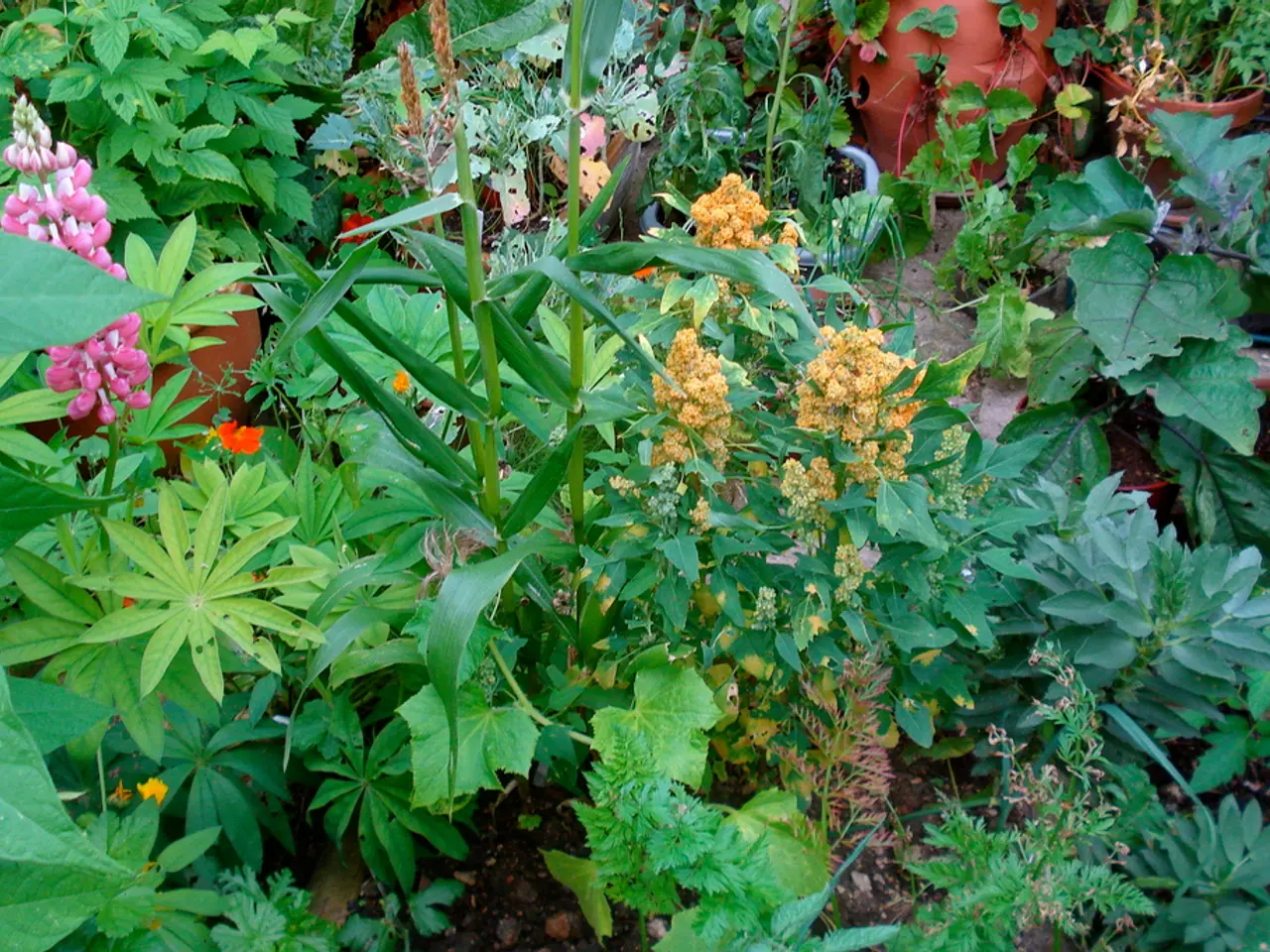Transforming the Lawn into a Vibrant Meadow: A Three-Step Process
In the quest for a vibrant and ecologically friendly garden, a low-maintenance flower meadow is an ideal choice. Here's a three-step guide to help you establish a beautiful, region-specific wildflower meadow.
**Step 1: Selecting the Right Seed Mix**
The success of your flower meadow depends on choosing seeds that are compatible with your soil type and the amount of sunlight your site receives. Ideal conditions include full sun (6+ hours) for most wildflower meadows, although partial shade (3-5 hours) can support certain mixes. Avoid deep shade as wildflower meadows generally don't thrive there.
Consider your site conditions such as wind exposure, slopes, or nearby trees, and choose seeds accordingly. Decide on plant height preferences based on your space: low-growing varieties for small or raised beds, taller types for immersive meadows. Lastly, check product descriptions carefully to ensure compatibility with your region's climate and conditions.
**Step 2: Preparing the Area**
Clear the area of grass, weeds, and unwanted vegetation. This can be done by hand for small plots or using solarization (covering soil with clear plastic to kill weeds) for larger areas. Remove the dead weeds after solarization. Loosen the top 5-10cm of soil using a rake or a broad fork; avoid deep digging to preserve soil structure. Optionally, sprinkle a light layer of compost to help seed germination and moisture retention, but avoid heavy fertilization, particularly high nitrogen fertilizers which favor weeds over wildflowers. Remove rocks and clumps and rake the surface smooth and level for better seed-soil contact. Raking also creates grooves that help hold seeds in place.
**Step 3: Sowing the Seeds**
For even seed distribution, mix your wildflower seeds with dry sand to help spread seeds uniformly across the soil. Sow seeds by scattering them in two directions (e.g., north-south and east-west) to ensure thorough coverage. After sowing, press the seeds gently into the soil surface using a rake, board, or roller. Do not bury seeds deeply; many wildflower seeds require light for germination. Finally, water the area lightly to keep the soil moist but not waterlogged until seeds germinate.
An additional tip: Include some seeds of yellow rattle if possible. This plant parasitizes grasses, weakening them and allowing wildflowers to flourish over time, reducing maintenance by naturally controlling grass competition.
By following these three straightforward steps—choosing the right seed mix, preparing the site carefully, and using proper sowing techniques—you can successfully establish a beautiful, ecologically beneficial, and low-maintenance flower meadow tailored to your region. The area should be weed-free and fine-grained before sowing. The seeds for a flower meadow can be mixed with moist sand for optimal distribution. The flower meadow should be walked on as little as possible. Seed mixes often include wildflowers, herbs, and grasses. Previous lawn should be removed before sowing the seeds. Seed mixes for flower meadows can be found in garden centers, hardware stores, or online. The first seedlings will be visible after about three weeks. A colorful flower meadow is beneficial for insects and is low-maintenance. The meadow only needs to be mowed once a year, preferably in spring with a scythe instead of a lawn mower.
To maintain the ecological integrity of your new flower meadow, avoid using high nitrogen fertilizers as they may promote weed growth over wildflowers. Additionally, consider incorporating yellow rattle seeds in your mixture to naturally control grass competition and reduce future maintenance.





